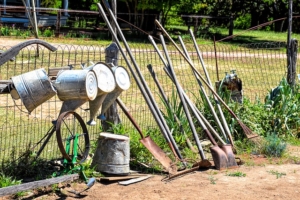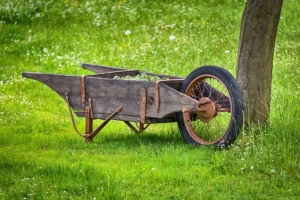June Garden Chore List
Gardening Tips
By Heather Stone
Here are some June garden chores to keep your veggies and flowers going strong.

Photo courtesy of pixabay
- Cage or trellis any vining vegetables such as cucumbers, beans and tomatoes. By training these vegetables to grow up you are saving precious garden space and keeping the fruit off of the ground and away from critters. Click here for trellis ideas!
- Continue watering your vegetable and perennial beds. Try to keep water close to the roots and off of leaves. Checked potted plants often, they tend to dry out faster.
- Keep up with the weeds! This can start to feel like a never-ending battle at this time of year, but keeping the weeds under control means more nutrients, water and sunlight for your vegetables and flowers.
- Mulch around vegetables to help conserve water.
- Side dress with compost for a mid-season boost.

photo courtesy of pixabay
- Begin replacing cool season crops that have begun to wind done or have bolted from heat.
- Plant successive crops of summer greens like collards, kale, chard and lettuce (Protect them from hot afternoon sun).
- Transplant any remaining warm season vegetable starts.
- Keep an eye out for pests.
- Keep your birdbaths full and clean.
- Plant a new patch of bush beans every couple of weeks.
- Pinch out suckers on your tomatoes.
- Keep deadheading perennials for continued bloom.
- Sit back, relax and enjoy your garden.
12 Easy Ways to Save Water Now

Photo courtesy of kaboompics / pixabay
Saving Water
by Heather Stone
No matter where you live reducing your water use is important. Water is a finite resource and we are using more of it than ever. Did you know that the average American uses 88 gallons of water a day at home? In comparison, Europeans use about half that and in sub –Saharan Africa persons average only 2-5 gallons a day. Now most of us aren’t likely to get our water usage to that level, there are many ways we can reduce our water consumption in the home.
When it comes to saving water, the little things do really add up. Here is a list of 12 easy things you can do in your home to reduce your water consumption and lower your water bill.
1. Repair leaks. Drip, drip, drip. This is the sound of a precious resource being wasted. Fix those leaking toilets and showers! This can make a big difference. The average family can waste 180 gallons per week or 9,400 gallons of water annually from household leaks. Nationwide, these household leaks can waste almost 900 billion gallons of water in a year. Not sure if your toilet is leaking. Place 10-12 drops of food coloring in your tank, don’t flush. Check back in thirty minutes. If there is color in the bowl, you have a leak.
2. Install water saving fixtures like faucet aerators and low flow showerheads. These low cost and easy to install items can significantly reduce water volume. If you have a little more money to spend replacing your old toilet with a low –flow model can save 50-80 gallons of water a day.
3. Don’t use your toilet as a wastebasket. Whenever you flush that tissue or bit of trash down the toilet you’re wasting gallons of water. Put it in the trash instead.
4. Take short showers instead of baths. Turn off the water while you are soaping up.
5. How many gallons of water go down the drain while we wait for the shower to warm up? Collect that water in a large bucket and use it to flush the toilet or water plants.
6. Turn off the water to brush your teeth. The average faucet releases 2 gallons of water a minute.
7. Fill the sink to shave instead of letting the water run.
8. Only run your dishwasher when it’s full.
9. Fill a basin with water for rinsing your dishes. Use this water to water your plants or flush your toilet.
10. Limit the use of your garbage disposal. Try composting those food scraps instead!
11. Wash your fruit and veggies in a tub or bucket instead of rinsing under running water. This can save gallons of water from going down the drain.
12. Only run your washing machine when it’s full and skip the permanent press cycle. Most machines use 5 gallons of water for that extra rinse.
Want to determine your personal water footprint? Check out this water footprint calculator.

